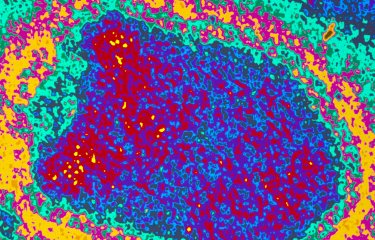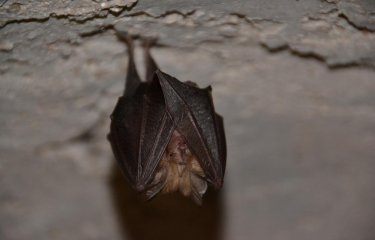Today, Africa is the second continent most affected by rabies, after Asia. A recent study conducted by Institut Pasteur researchers retraced the origins and evolution of the disease in Western and Central Africa, and revealed that the emergence and the dissemination of the rabies virus coincided with the beginning of European colonization. In addition to its historical value, this research also yields important data for the future of the fight against rabies in this region.
Press release
Paris, march 31, 2009
Despite the existence of effective vaccines, 24,000 people die of rabies in Africa each year and the infection is mainly transmitted by dogs.
The Lyssavirus Dynamics and Host Adaptation Unit at the Institut Pasteur in Paris, headed by Hervé Bourhy, investigated the evolutionary dynamics of dog rabies viruses in Western and Central Africa. The research, led by Chiraz Talbi and Hervé Bourhy, was undertaken in partnership with teams from America, Italy and Africa (Burkina-Faso, Ivory Coast, Mali, Mauritania, Niger, Central African Republic), and the Institut Pasteur in Dakar and Bangui.
The researchers analyzed a total of 182 isolates of rabies viruses, sampled from 27 African countries over 29 years; 92 of these isolates were newly collected and sequenced.
Their genetic study revealed that the rabies viruses circulating in this region belong to the same lineage, known as “Africa 2”. The phylogenetic study of this lineage suggests a possible east-to-west spread of the rabies viruses across Africa. The findings also show that the emergence of these viruses in the African region studied is relatively recent, i.e. less than 200 years ago (the average date for the emergence of the “Africa 2” lineage in the study is 1845). This period coincides with the rise in European colonization and urbanization.
According to the evolution of the viral isolates observed by the researchers, the viruses were probably introduced in central Africa. They then gradually spread west- and south-westwards, as travel and trade increased between the various countries following colonization in the first half of the 20th century. The urbanization process probably also helped to spread and establish dog rabies in this region.
Detailed phylogenetic analysis shows that the “Africa 2” lineage spread gradually — probably over more than a century — to Western and Central Africa. These findings challenge a theory put forward by other authors in 2007, which suggests that rabies viruses could spread rapidly from endemic regions in Africa via “superspreader” dogs, capable of transmitting rabies over large distances.
This study on the history of dog rabies viruses in this African region also brings new hope for the future.
"Our study may be useful for devising an efficient strategy for controlling and eradicating dog rabies in Western and Central Africa”, the authors emphasized.
For the first time, the researchers have revealed two factors of key importance in the fight against rabies in this region. Firstly, rabies does not spread between North African and Sub-Saharan countries; and secondly, the exchange of viruses between countries in Western and Central Africa is limited.
“Consequently, a gradual strategy aiming to eradicate rabies in Western and Central Africa is conceivable”, concluded Hervé Bourhy.
This research was conducted as part of the European research program RABMEDCONTROL (http://www.rabmedcontrol.org/).
Sources:
“Evolutionary history and dynamics of dog rabies virus in western and central Africa” Journal of General Virology, April 2009.
Chiraz Talbi1 (1), Edward C. Holmes (2), Paola de Benedictis (3), Ousmane Faye (4), Emmanuel Nakouné (5), Djibo Gamatié (6), Abass Diarra (7), Bezeid Ould Elmamy (8), Adama Sow (9), Edgard Valery Adjogoua (10), Oumou Sangare (7), William G. Dundon (3), Ilaria Capua (3), Amadou A. Sall (4) and Hervé Bourhy (1)
1.Institut Pasteur, UPRE Lyssavirus Dynamics and Host Adaptation Unit, National Reference Center for Rabies, Reference and Research WHOCC for Rabies, Paris, France 2. Center for Infectious Disease Dynamics, Department of Biology, The Pennsylvania State University, Mueller Laboratory, University Park, USA 3. Veneto Region Experimental Animal Health Care Institute, Research and Development Department, Rabies Unit, Padua, Italy 4. Institut Pasteur, Dakar, Arbovirology Laboratory, Dakar, Senegal 5. Institut Pasteur, Bangui, Laboratory for Arboviruses and Viral Hemorrhagic Fevers, Bangui, Central African Republic 6. Veterinary Laboratory Directorate, Niamey, Niger 7. Central Veterinary Laboratory, Bamako, Mali 8. National Veterinary Breeding and Research Center, Nouakchott, Mauritania 9. Virology Department, National Breeding Laboratory, Ouagadougou, Burkina-Faso 10. Institut Pasteur, Ivory Coast, Nervous System Virus Unit, Epidemic Viruses Department, Abidjan, Ivory Coast
Contact persons:
- Institut Pasteur Press Office : Corinne Jamma or Nadine Peyrolo –
+33 (0)1 40 61 33 41 – cjamma@pasteur.fr







